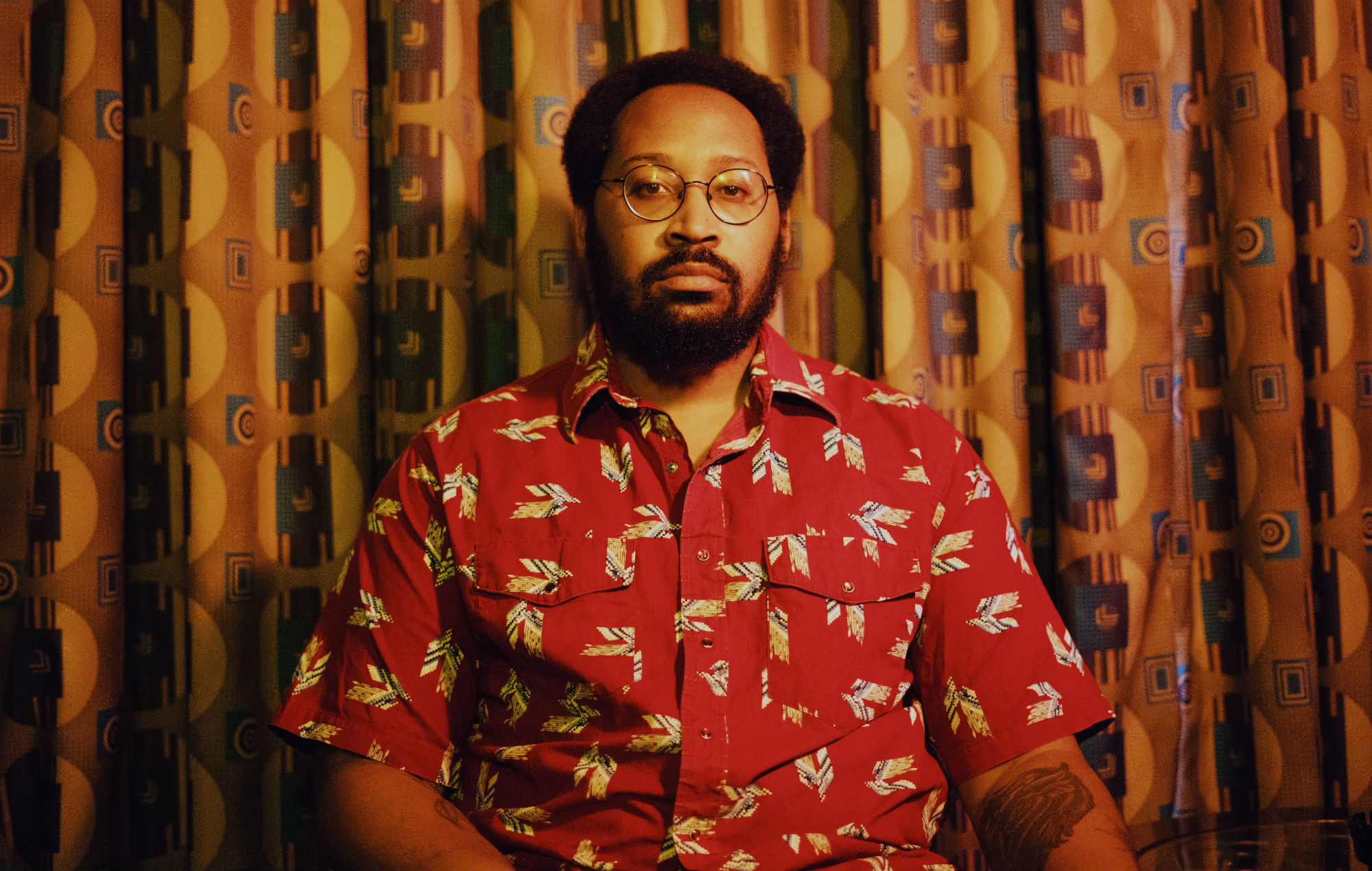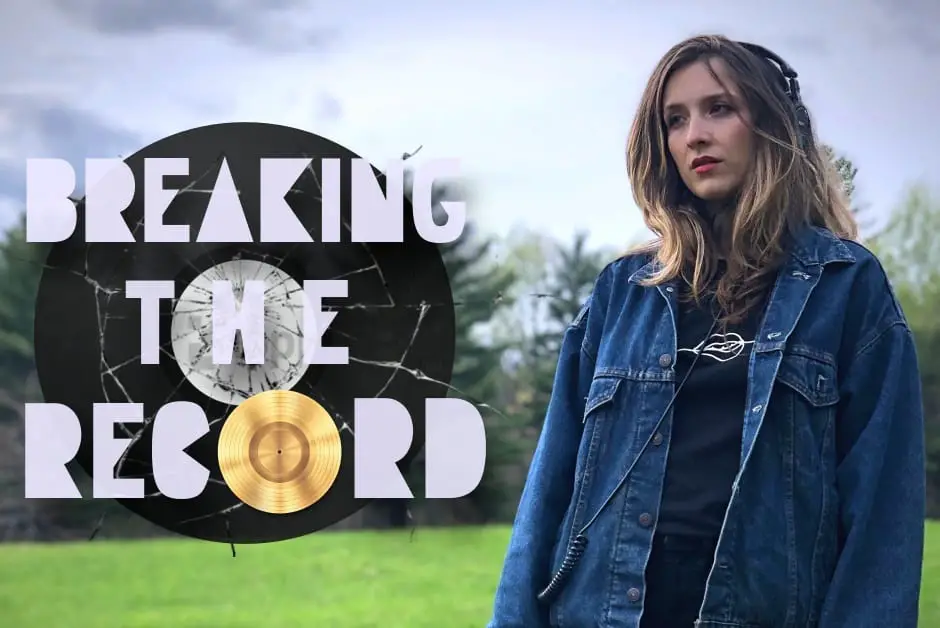A stirring coming-of-age soundtrack to life and love, isolation and connection, Emily Keener’s sophomore album ‘I Do Not Have to Be Good’ marks her return with unbridled honesty, intimate reflection, and a hauntingly poignant indie folk sound.
for fans of Joni Mitchell, Phoebe Bridgers, Lucy Dacus
‘I Do Not Have To Be Good’ – Emily Keener
[soundcloud url=”https://api.soundcloud.com/playlists/944517901?secret_token=s-gKNCP” params=”color=%232f6061&auto_play=true&hide_related=false&visual=true&show_comments=true&show_user=true&show_reposts=false” width=”100%” height=”450″ iframe=”true” /]
You say you didn’t love me then, but do you love me lately?
Emily Keener has marked her 2020 return with unbridled honesty, intimate reflection, and a hauntingly poignant indie folk sound. It’s a winning combination for the 21-year-old Cleveland-based singer/songwriter, and one that makes her sophomore solo record a tremendous success: A stirring coming-of-age soundtrack to life and love, isolation and connection, I Do Not Have to Be Good hails Emily Keener’s rise as a vulnerable lyricist and a breathtaking songwriter.

What were we doing on that couch
No one in that room
was gonna figure anybody out
You can learn to love the edges
But they’ll always cut you down
All those classic country songs you hate
I sleep with them turned up loud
Clear as a bell on a cabin wall
Calling me home when the sun goes down
And the chorus falls
I don’t need your 3 AM commiserations
There’s a hook for every lonely minute
On this radio
– “Static,” Emily Keener
Atwood Magazine is proud to be premiering I Do Not Have to Be Good, independently released Friday, May 22, 2020. An ambitious project four years in the making, Emily Keener’s new album is a sophomore triumph: A former Voice Season 10 competitor, Keener’s music takes a refreshingly clear, thoughtful approach to significant coming-of-age questions of intimacy and purpose, sex and identity, connection and living with intent. Her songs are haunting like those of Phoebe Bridgers, and equally moving; there is no question that this young up-and-comer is going places.

In premiering the album’s lead single “Do You Love Me Lately?” this February, Atwood Magazine praised Keener for crafting “a raw indie folk song exploring vulnerability and insecurity,” calling it “heart-wrenchingly beautiful in its grace and overwhelming honesty.” The singer’s depiction of grief and anguish through delicate vocals and expressive, nuanced melodies also earned her a spot on Atwood‘s Editor’s Picks, which further highlighted how the track covers so much more than the descriptions of breakup or love’s loss would suggest: “The song is about finding oneself in a haze of uncertainty and self-doubt; it’s about learning to let go of expectations, and learning to be vulnerable; about diving headfirst into our fears, and dwelling in the darker spaces of our psyche.”
Look at me
I’m taking it badly
Nose to my knees
I’m wondering madly
You say you didn’t love me then
But do you love me lately?
I can’t spell the word
So I’ll sound it out
It’s like being a flightless bird
When she took a plane outta town
While certainly buoyed by the inimitable beauty of its lead single, I Do Not Have to Be Good is a wondrous, enchanting journey in and of itself. The album expands the breadth of Keener’s art and artistry through juxtaposed moments of serenity and turmoil, characterized as much through sonic highs and lows as by moments of emotional tranquility and intensity. The haunting opening track “Nap,” released earlier this May as a third single, sets the record’s tone perfectly with its evocative depth, percussive resonance, and achingly stripped, raw arrangement:
Tell me ‘bout the starman again
Tell me ‘bout your morning cigarette
Speak in tongues I understand
Teach me ones I haven’t picked up yet
You remind me of something
That the jesus-people said
Everything makes sense on Sunday morning
It is written
Jesus is coming, hope you ate your spinach
‘Cause Saulie went blind and Judas got stitches
And I would take a nap with you
Over anything that god could do
You’re not going to bed without me
Not going anywhere without me
Thus begins Keener’s complete unveiling: a true odyssey into the mind’s eye, I Do Not Have to Be Good brings us closer to the artist than ever before through diary-like entries spelled out in song after heart-aching song. Whether it’s the touching interplay of guitar and piano subverting her second single “Boats,” or the gorgeously minimal arrangement of the lovetorn “I Know,” or the emotionally resonant heart-on-sleeve performance in “Static,” Keener’s record elevates real life – those special, little moments of understanding, longing, love, belonging, and so on. It’s a testament not only to her growth as an artist, but also to her handle on the magic of our shared human experience.
Blankets and coffee
Cover me and take these burdens off me
Who cares what the world expects
When we are lip to lip and neck to neck?
Kissing like it’s ending
I don’t know if it will or when
But I know, I know, I know
I’ll see you again
We belong, we belong, we do
You know my soul and my soul knows you
We belong, we belong
How could a love like this be wrong?
We belong, we belong, we do
You know my soul and my soul knows you
We belong, we belong
Love is never wrong
We belong, we belong, we do
You know my soul and my soul knows you
We belong, we belong
I’m sick of letting go when I just want to hold on
We belong
– “I Know,” Emily Keener

Spiritual, immersive, and unabashedly true: This album is a soundtrack to our darkest days, as well as our lighter ones.
It’s a beautiful listening experience through and through, and one that feels fresh and inviting every time we listen. Emily Keener has tapped into greatness on her sophomore effort; here’s to hoping we hear much more of this artist-to-watch in the years to come. Listen to the full record via our exclusive stream, and peek inside Emily Keener’s I Do Not Have to Be Good with Atwood Magazine as the artist goes track-by-track through the music and lyrics of her sophomore album!
— —
:: stream/purchase I Do Not Have To Be Good here ::
‘I Do Not Have To Be Good’ – Emily Keener
[soundcloud url=”https://api.soundcloud.com/playlists/944517901?secret_token=s-gKNCP” params=”color=%232f6061&auto_play=false&hide_related=false&visual=true&show_comments=true&show_user=true&show_reposts=false” width=”100%” height=”450″ iframe=”true” /]
:: Inside I Do Not Have to Be Good ::

— —
Nap
I wrote Nap in my late-teens as I was starting to navigate adulthood. It’s about the desire to become enmeshed with someone when the world feels too overwhelming to process alone. In the midst of the chaos of 2020, I relate to it even more. I hear my past self differentiating between what was familiar and what I actually believed to be true. Dan Fernandez plays a dynamic percussion part that echoes in the distance, along with layers of spectral vocals I created with Lexicon effects processors. Dalton Brand wove together the ethereal effects that make the track feel like it’s inhaling and exhaling. “I would take a nap with you/Over anything that god could do/You’re not going to bed without me/Not going anywhere without me” The lyrics are informed by the deep confusion and discomfort I felt as I let go of the religious certainty that was my foundation in childhood. Life felt like too much to handle. I wanted to hole up and sleep forever. That feeling has dissipated over time, but it comes and goes in waves still. My hope is that the song can be a reminder of common humanity; the struggles and coping mechanisms we share.
Do You Love Me Lately?
We had to record three or four different versions of this one before it felt right, and I guess that’s fitting for a song that’s about questioning yourself romantically. It’s set in the hollow space where openness isn’t reciprocated, movement isn’t mirrored; you’re waiting around for someone to figure out whether they care for you or not. The meaning has morphed over time for me, but the story started off as a fantasy about an unavailable dreamgirl. “Look at me, I’m taking it badly/Nose to my knees, I’m wondering madly/You say you didn’t love me then/But do you love me lately?” The chorus is a plea to this spectre I had imagined so much with, and I wanted it to sound raw and sheepish and insecure; a cry for reassurance within an uncertain dynamic. It touches on what we truly desire from our partners, the things that we project onto others unconsciously, and the types of love we idealize.
I Know (feat. Cathalyn)
This song is a reflection on feeling a reciprocal ‘knowing’ with someone. The kind of connection that transforms simple shared experiences into a loving space that you’re both fully present in. A pining is woven in with small intimacies like blankets and morning coffee. There’s this assertion throughout the song– ”I know, I know, I know” — and the lyrics eventually reduce to nothing more than short, sure phrases. When you’re apart from someone you really care for, it’s almost like you have to be extra adamant to ground it all in reality. “We belong, we belong, we do/You know my soul and my soul knows you.” I was lucky enough to be joined by my friend Cathalyn (of The Katy) on this track. She lent lovely melodies that color the ending with warm, anthemic energy.
I Don’t Know Anything
This song is about self-betrayal and the micro-interactions that cause a person to distrust themselves over time. When I listen to it, I hear my past self writing from an insular world; a cocoon, safe and separate. “I feel years behind the people/In the places I go/So much I could say, so much I should know.” I felt like a stranger to my peers, almost like there was an out-of-print book about existing that everyone else had read but I’d missed out on somehow. No one had to say “wow, you don’t know anything” outright. That was just a given to me, a core belief I held. Within the haze, though, there were some guiding lights that brought me back to myself. I’m striving to trust my own perception and intuition, and maybe know one or two more things eventually.
Boats
I wrote this one after sailing Lake Erie on a summer night under the stars. It was my first and only time on a sailboat, so it’s nice to have a musical snapshot of it. Everything was calm and there weren’t any other boats or people in sight. I felt very present and at peace, no thoughts running through my head other than to notice how beautiful it all was. I wanted to make something simple to reflect that serenity. There’s a bittersweet aspect to it, a recognition that every experience comes to an end. “I’ll start building a boat/Late into every night/To sail us both away from the passing of time” I sing it to appreciate the loves in my life and the moments I get lucky enough to end up in every now and again.
Static
Static was recorded live in-studio with Curtis Leonard. We were both playing acoustics, and doing full take after full take. The energy of the performance we chose is really special to me and it’s exactly what I hoped it could be. The song observes the decline of a relationship and the fundamental differences that have worn it down over time. Even things as simple as disagreements about what music to listen to can speak to resentments that have built up as a result of unconscious patterns and unrealized desires. “What were we doing on that couch?/No one in that room was gonna figure anybody out.” I associate Static with a loss of connection. A transmission that’s been blocked, communication between two entities that has devolved into something unrecognizable. In essence, the song is about sifting through that convolution to find a solid truth to hold. The chorus is a flashback to my childhood. A house nestled in thick forest, a dinner bell on the side, we’re facing the barn, a song’s playing somewhere. “Clear as a bell on a cabin wall/Calling me home when the sun goes down and the chorus falls” We listened to a lot of country music when I was little. I felt inexplicable comfort and satisfaction when the chorus would arrive, when the singer finally got to the hook they’d been setting up the whole time. The song could be ridiculous or heartbreaking, and it would still feel like a great relief to me. A high, even. It’s what made me want to write music. “I don’t need your 3 AM commiserations/Cause there’s a hook for every lonely minute/On this radio station” I look for closure and familiarity in songs when there is little to be found elsewhere. In uncertain times, I still find myself listening for the hook.
Mary, I Love Her
I wrote this song as a tribute to Mary Oliver, a couple of weeks after she passed away. Her poetry made a deep impression on me, and always seemed to pop up in my life when I needed it most. The first line (“I do not have to be good”) is also the album title, and it is a response to Mary’s poem ‘Wild Geese’ which reads:
You do not have to be good
You do not have to walk on your knees
for a hundred miles through the desert repenting.
You only have to let the soft animal of your body
love what it loves.
I’ve always found these lines to be deeply affirming. Having spent years mired in self-doubt and perfectionism, the idea of presenting as anything other than good and perfect was alien to me. But this poem in particular got through to me time and again. It helped shape me into a more compassionate person, toward myself and others. I thank Mary for her direct, heart-opening truth.
Elbow
This takes me back to the attic apartment; its rain-speckled windows framing rows of slate gray roofs and patches of light gray Cleveland sky. The tone of the song itself is gray, and the lyrics describe what it feels like to hide from myself in my own body, in my own home. I’d begun to notice how suppressing certain emotions had affected my sense of self over time. “Never been worse/Never been better/Sleepwalking in the strangest weather” It’s true that when we push things down, they just show up in other ways. I started having vivid, disturbing dreams. I was keeping my mouth closed because I had no idea what it might say. Eli Hanley plays the erratic piano part, an lilting undercurrent of chaos. When I wrote the song, I was afraid of myself and I wanted to retreat from everything. The emotional qualities remind me of fog, and the shapes of things concealed in fog.
Comfort
I didn’t write Comfort in a motel room, but I think the song lives in one. The recording itself is rough and smoke stained, and it feels like paper that’s slowly singeing. I remember sitting at the console alone, working on vocal arrangements all night. Layers and layers of Echoplex, rough transmission. The lyrics describe a breaking point; the moment I realized that the role I was playing with someone had been causing me pain. “I can be your comfort or your blinding light/Tell me how you want me to leave you tonight” Leaving felt like too big of a thing to do alone, so I found myself waiting and asking–consciously and unconsciously–for them to help me move on. But that defeats the purpose, doesn’t it? Separating from someone reminds me: I’m stuck with myself. I have to walk my own path, do hard things, shift my own patterns. It’s not easy to accept that. When people disentangle from each other, the pain feels elemental. The sense of safety and comfort you built together is no longer there. It’s bewildering. I found myself questioning reality, wondering what the hell had happened, what context I must have missed that might explain my situation to me. “They burned like angels together/They thought that playing house could make a home/Oh, is this how the story goes?/All my waking hours are blurry pictures/And I’m falling asleep to static on the radio” I lost parts of myself through entanglement with another. It’s like when you forget to clasp the ends of necklaces, and all the chains become a messy knot. Trying to force it apart feels dangerous; what if something snaps? Studying the chains to see where they lead is frustrating, they all form one entity at this point and nothing makes sense to the eye. Disentanglement happens somewhere between the two points. It’s gently tugging on strands to see what gives and what doesn’t, and keeping your eyes open to notice patterns and signs that you’re moving in the right direction. I’ll probably go my whole life seeking comfort and looking for home in people and in things, like most everyone. But hopefully that won’t drive my choices every day. Maybe only sometimes.
— — — —

Connect to Emily Keener on
Facebook, Twitter, Instagram
Discover new music on Atwood Magazine
? © Dalton Brand
:: Stream Emily Keener ::








